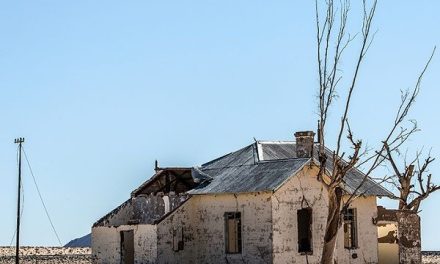
Shall we take pointers from our nextdoor neighbour?
Earlier in November, the Botswana President Lt General Ian Khama delivered his State of the Nation address to his parliament. As these events go, they do not differ substantially across the region, each Head of State usually telling his voters how well they are doing.
The Botswana State of the Nation address had a somewhat different flavour. True to the general framework, the President also carried on about all his government’s achievements but the outstanding feature was his in depth discussion of their macro-economic drivers, in particular the level of offshore and onshore government savings.
In my mind, Namibia and Botswana are two very comparable neighbours. Both are large, scarcely populated territories with the majorities of their populations concentrated in certain areas of higher rainfall or higher economic activity. Both are in essence arid. Both are only at the beginning of the development curve. Both are equally exposed to the might and the wrath of the elephant in the south. Both show more or less similar inflation trajectories as a result of their proximity and dependence on the South African economy.
Both have democratic governments elected by all voters in free and fair elections, and both change the seat of power according to a prescribed, frequent schedule based in law. However, in both countries the overwhelming vote of the majority keeps the ruling party firmly entrenched.
So why are there such disturbing differences between the Namibian and the Botswana economies when so many important factors show such a clear convergence?
I believe the differences stem from one source only, a budget deficit versus a surplus.
Namibia budgets for a deficit while Botswana has for about 45 of the past 50 years budgeted for a surplus. This is the only but the most important difference between their economy and ours.
The Namibian budget deficit has to be finances and for this the government must rely on the local capital market, and to a lesser but increasing degree, on offshore capital markets. Botswana, not needing to do this to keep the wheels rolling, commands a substantial investment stock, both in terms of foreign reserves and domestic savings, i.e. government savings, not those belonging to its citizens.
Khama stated “I am pleased to note that in 2015 our domestic inflation rate continued to fall within the Bank of Botswana’s target of 3-6%, with monthly inflation ranging from 2.8% and 3.6% during the first half of the year. This trend is expected to continue in the coming months, due in part to lower fuel prices. For its part, the Bank of Botswana has pursued an accommodative monetary policy, lowering its Bank Rate to 6% thus reducing the cost of borrowing.” This is a quite revealing statement especially when compared to our situation. Namibian inflation has also been falling but it is at a slightly higher level to start with. Currency weakness coupled to exchange rate deterioration has much to do with this.
Then Khama explained their weighted exchange rate regime saying that in January 2015, the weights of the currencies in the Pula basket were revised to 50% South African rand and 50% SDR currencies, based on inflation differentials, while a zero annual rate of crawl of the Pula exchange rate was implemented for the year.
This statement is an eye-opener. It means the Pula is only half as exposed as the Namibia Dollar to the vagaries of the Rand. It also means that for the purpose of determining the other half of its value, it rests on the strength of the US Dollar, the Euro, the Pound and the Yen. And if the Chinese get their way, then soon the Yuan will be part of this basket as one of the Special Drawing Rights determinant currencies. Moves in this direction have actually been announced by the International Monetary Fund in the past week.
For Botswana it creates first of all an international trade environment where they are not completely the hostage of the mismanaged South African economy. That must be a huge relief, and one I am sure they exploit to the fullest.
From my own Namibia Botswana comparison, I draw two conclusions. First, we must also strive to to decrease our Rand dependence by copying the Botswana exchange rate regime, and, secondly, after the 2017 fiscal year, it will be to our long-term benefit to stop budgeting for deficits and make budget surpluses the cornerstone of our fiscal planning and execution.









































